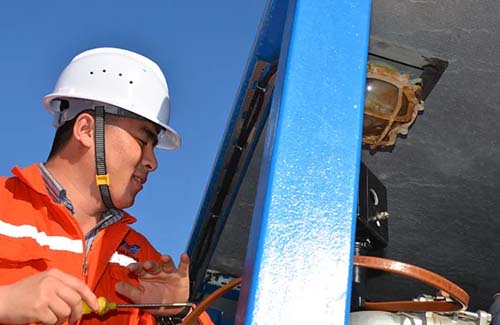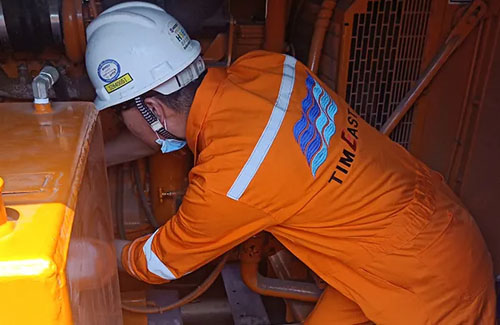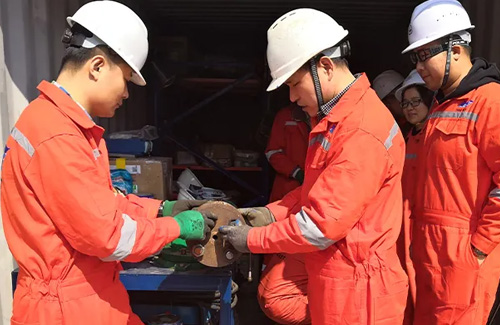Jun. 29, 2023
Chemical cleaning, also known as chemical flushing or chemical treatment, is a process used to remove various types of contaminants and deposits from industrial equipment, pipelines, and systems. It involves the use of chemical cleaning agents or solutions to dissolve or dislodge scale, corrosion, sludge, organic matter, or other unwanted substances. The process of chemical cleaning typically follows a systematic approach that includes several steps. Here is a general overview of the process:
Pre-Inspection and Assessment:Before initiating the chemical cleaning process, a thorough inspection and assessment of the system or equipment to be cleaned are conducted. This step helps identify the type and extent of contaminants, the materials involved, and any specific considerations or limitations that need to be addressed during the cleaning process.
Selection of Cleaning Agents:Based on the pre-inspection findings and the nature of the contaminants, suitable cleaning agents or chemicals are selected. The choice of cleaning agents depends on factors such as the type of deposits, the material of the equipment, environmental considerations, and safety requirements. Commonly used cleaning agents include acids, alkalis, solvents, detergents, chelating agents, and biocides.
Preparation of Cleaning Solution:The selected cleaning agents are prepared by diluting them to the appropriate concentration. The concentration may vary depending on the specific requirements and the severity of the contamination. It is crucial to follow the manufacturer's guidelines or industry best practices to ensure the proper mixing and preparation of the cleaning solution.
Safety Measures and Personal Protective Equipment (PPE):Chemical cleaning involves handling potentially hazardous substances, so it is essential to implement proper safety measures and use appropriate personal protective equipment (PPE). This may include wearing gloves, goggles, protective clothing, and respiratory protection, as well as ensuring proper ventilation in the cleaning area.
Equipment Preparation:The equipment or system to be cleaned is prepared for the chemical cleaning process. This may involve isolating the equipment from the rest of the system, closing off valves, removing or protecting sensitive components, and ensuring proper drainage.
Application of Cleaning Solution:The prepared cleaning solution is circulated or applied to the equipment or system using suitable methods such as spraying, soaking, or recirculation. The cleaning solution is introduced into the system and allowed to come into contact with the contaminated surfaces. The duration of the cleaning process may vary depending on the severity of the deposits and the effectiveness of the cleaning agents.
Agitation and Mechanical Assistance:In some cases, mechanical assistance or agitation is employed to enhance the cleaning process. This can include the use of brushes, scrubbers, or high-pressure water jets to dislodge stubborn deposits. Mechanical agitation helps improve the contact between the cleaning solution and the contaminated surfaces, facilitating the removal of the deposits.
Circulation and Filtration:During the cleaning process, the cleaning solution is often circulated through the system to ensure thorough cleaning and distribution of the cleaning agents. In larger systems, filtration units or strainers may be used to remove suspended particles and debris from the cleaning solution, preventing recontamination.
Rinse and Neutralization:Once the desired cleaning effect is achieved, the cleaning solution is flushed out from the system. This is typically followed by a thorough rinsing process using water or a neutralizing solution to remove any residual cleaning agents and restore the system to a neutral pH.
Post-Cleaning Inspection and Verification:After the chemical cleaning process, a post-cleaning inspection is conducted to verify the effectiveness of the cleaning and ensure that the desired cleanliness standards have been achieved. This may involve visual inspections, sample collection, or the use of testing methods to assess the cleanliness and verify the removal of contaminants.
Dec. 12, 2023
The Basics of Electric Heat Trace Technology In the world of industrial processes and temperature control, Electric Heat Trace (EHT) technology plays a crucial role.Nov. 23, 2023
Performing a Leak Test: Step-by-Step Guide A leak test is a crucial procedure to ensure the integrity of a system and identify potential leaks in pipes, joints, or containers.Nov. 08, 2023
Main Steps of a Flange Management Procedure Flange management is a critical aspect of maintaining the integrity and reliability of piping systems in various industries.

